Creating a safer bathroom environment is one of the most critical steps you can take to protect your loved ones, especially older adults or individuals with mobility issues. Bathrooms are often riddled with potential hazards like slippery floors, wet surfaces, and cramped spaces, making them a leading cause of falls at home.
But here’s the good news. With some thoughtful planning and the right materials, you can design a stylish and functional bathroom that prioritizes bathroom safety without compromising on aesthetics. One smart way to start is by choosing low-maintenance, safe alternatives to traditional tiles.
This guide will walk you through the best tile alternatives for accessibility, explain their pros and cons, and share practical safety tips to ensure your bathroom is secure for everyone.
Why Tile Alternatives Are the Future of Bathroom Safety
Traditional ceramic and porcelain tiles may look appealing, but they can pose serious risks in a bathroom. When wet, these materials often create slippery surfaces, increasing the likelihood of slips and falls. The glossy finishes might also wear down over time, making the bathroom floor more hazardous.
Tile alternatives like vinyl, acrylic, and cultured marble are growing in popularity due to their slip-resistant properties, ease of maintenance, and aesthetic versatility. These options help you create a safer bathroom environment while ensuring the space stays comfortable and functional.
Quick tip: Simplify your bathroom renovation by exploring non-slip materials like vinyl or textured acrylic. These surfaces significantly reduce the chance of falls.
Top Tile Alternatives for a Safer Bathroom
1. Vinyl Flooring
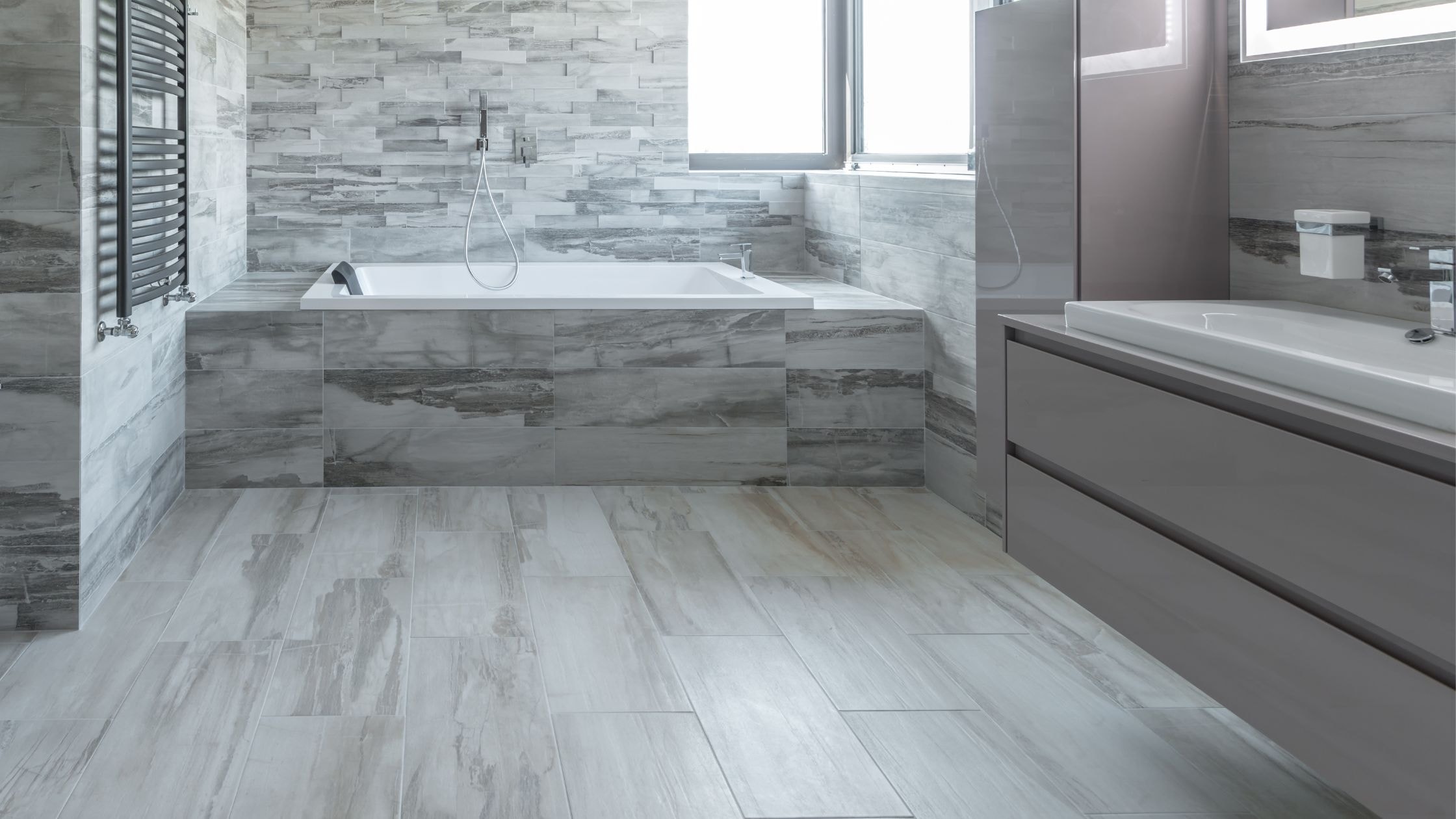
Vinyl flooring is a practical, affordable, and versatile option for enhancing bathroom safety while maintaining style and functionality. It is designed with a non-slip backing and a textured surface, which provides excellent traction, reducing the risk of slips and falls—even in wet conditions. This makes it an ideal choice for families, seniors, or anyone needing a safer bathroom environment.
In addition to its safety benefits, vinyl flooring is highly water-resistant, making it perfect for high-moisture areas like the bathroom. It is also easy to maintain, requiring just simple cleaning to keep it looking great over time. Available in a variety of colors, patterns, and finishes, vinyl can mimic the look of more expensive materials like hardwood or stone while being much more budget-friendly.
Pros:
- Slip-resistant when textured, ensuring better safety in wet areas.
- Extremely affordable, making it a cost-effective option for budget-conscious homeowners.
- Durable and long-lasting, offering excellent value for money.
- Water and stain-resistant, perfect for bathrooms and other high-moisture spaces.
- Easy to clean and maintain, ideal for busy households.
Cons:
- Can show signs of wear in high-traffic areas over time, especially if not properly maintained.
- May lack the premium, luxurious feel of higher-end materials like natural stone or hardwood.
- Requires careful installation to avoid water seeping underneath, which could cause damage over time.
With its combination of safety, affordability, and low-maintenance features, vinyl flooring remains one of the best choices for a functional and secure bathroom space.
2. Acrylic Shower Walls
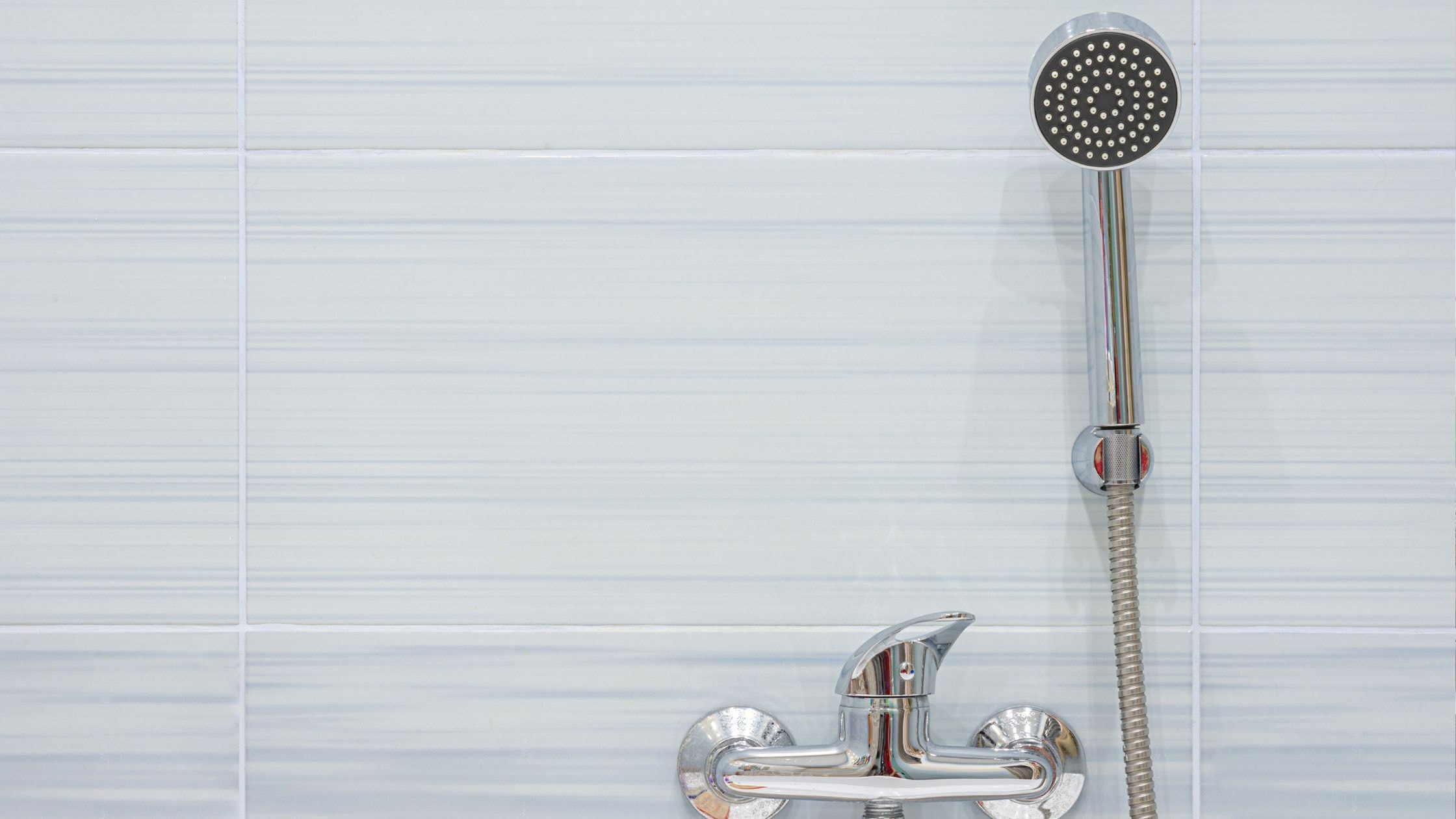
Acrylic surfaces are an excellent choice for transforming your shower and bathtub area into a sleek, modern, and accessible space. Unlike traditional tiled showers, which often feature grout lines that can collect dirt, promote mold growth, and even pose a tripping hazard, acrylic shower walls provide a smooth, seamless surface. This makes them ideal for anyone looking for a low-maintenance and safer bathing environment.
Acrylic walls are made from durable, water-resistant materials designed to withstand daily use while maintaining their appearance over time. They are also resistant to mold and mildew, making them a hygienic option for bathrooms.
Tips for Accessibility
To enhance safety and comfort, consider pairing acrylic shower walls with a shower chair or bath chairs. These additions provide extra support for individuals who may have difficulty standing for extended periods while bathing. For even more accessibility, handrails or grab bars can be installed to complement the acrylic surface, creating a space that prioritizes mobility and independence.
Pros:
- Seamless and easy-to-clean surface reduces maintenance time.
- Extremely durable and highly water-resistant, ensuring a long-lasting finish.
- Mold- and mildew-resistant, contributing to better hygiene in the bathroom.
- Minimal upkeep compared to tiled surfaces with grout.
Cons:
- Limited texture options may provide less tactile grip, which could be a concern for some users.
- Customization options (like patterns or designs) might be fewer than with other materials.
Ideal for Modern Homes and Accessibility
Acrylic shower walls are perfect for homeowners looking for a modern yet practical upgrade to their bathrooms. They blend style, durability, and ease of use, making them especially suitable for families, seniors, or anyone with mobility challenges.
3. Cultured Marble
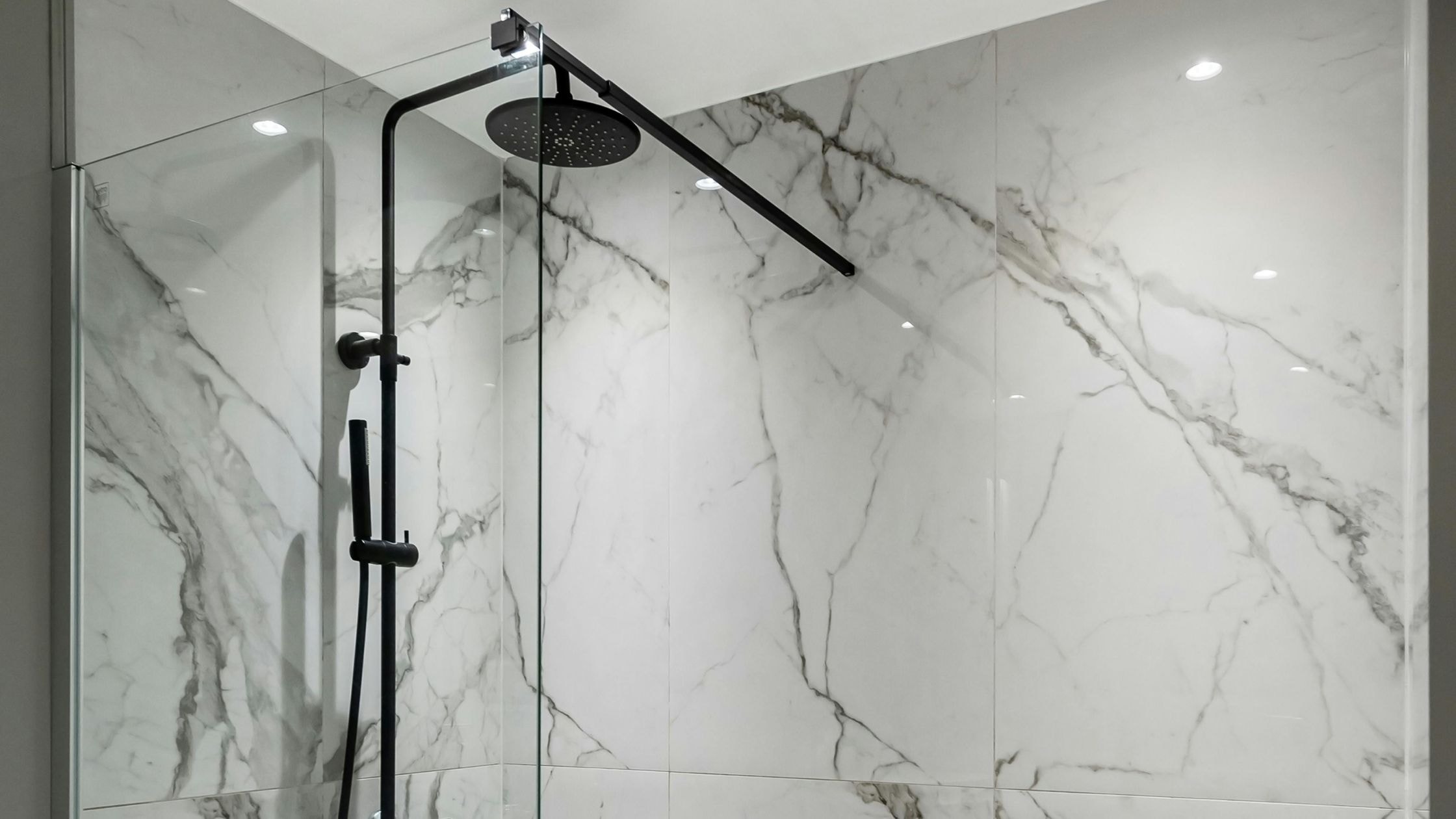
For those seeking a luxurious and sophisticated option, cultured marble is an excellent choice. This engineered material is made by combining marble dust with resin, creating a sleek and polished surface that enhances the aesthetic appeal of any space. Its non-slip and waterproof properties make it ideal for use in bathroom floors, shower walls, and countertops. Cultured marble is not only functional but also adds a touch of elegance to your home.
Pros:
- Elegant and modern aesthetic: Cultured marble offers a high-end look similar to natural stone, perfect for creating a sophisticated style in bathrooms or kitchens.
- Highly water-resistant: Designed to withstand moisture, it’s a practical choice for wet areas like bathrooms and showers.
- Durable and long-lasting: Resistant to chipping and cracking, cultured marble is built to endure daily use while maintaining its beauty over time.
- Low-maintenance surfaces: Unlike natural stone, it doesn’t require sealing, making it easier to care for.
Cons:
- Higher upfront cost: Compared to materials like vinyl or acrylic, cultured marble comes with a steeper initial investment, though it can pay off with its durability.
- Requires regular polishing: While easy to maintain, it does need occasional polishing to maintain its shine and prevent dullness.
- Prone to scratches: Despite its durability, the surface can develop scratches over time if not handled with care.
Is Cultured Marble Right for You?
If you’re aiming for a blend of style, functionality, and durability, cultured marble is a fantastic option. Though it requires a higher upfront investment and some upkeep, its elegance and practicality make it a worthwhile choice for homes seeking a touch of luxury.
Did you know? Installing grab bars in high-risk areas like the shower, bathtub, and toilet dramatically reduces the risk of falls in the bathroom. They’re a simple yet effective safety measure!
Practical Bathroom Safety Tips for Tile Alternatives
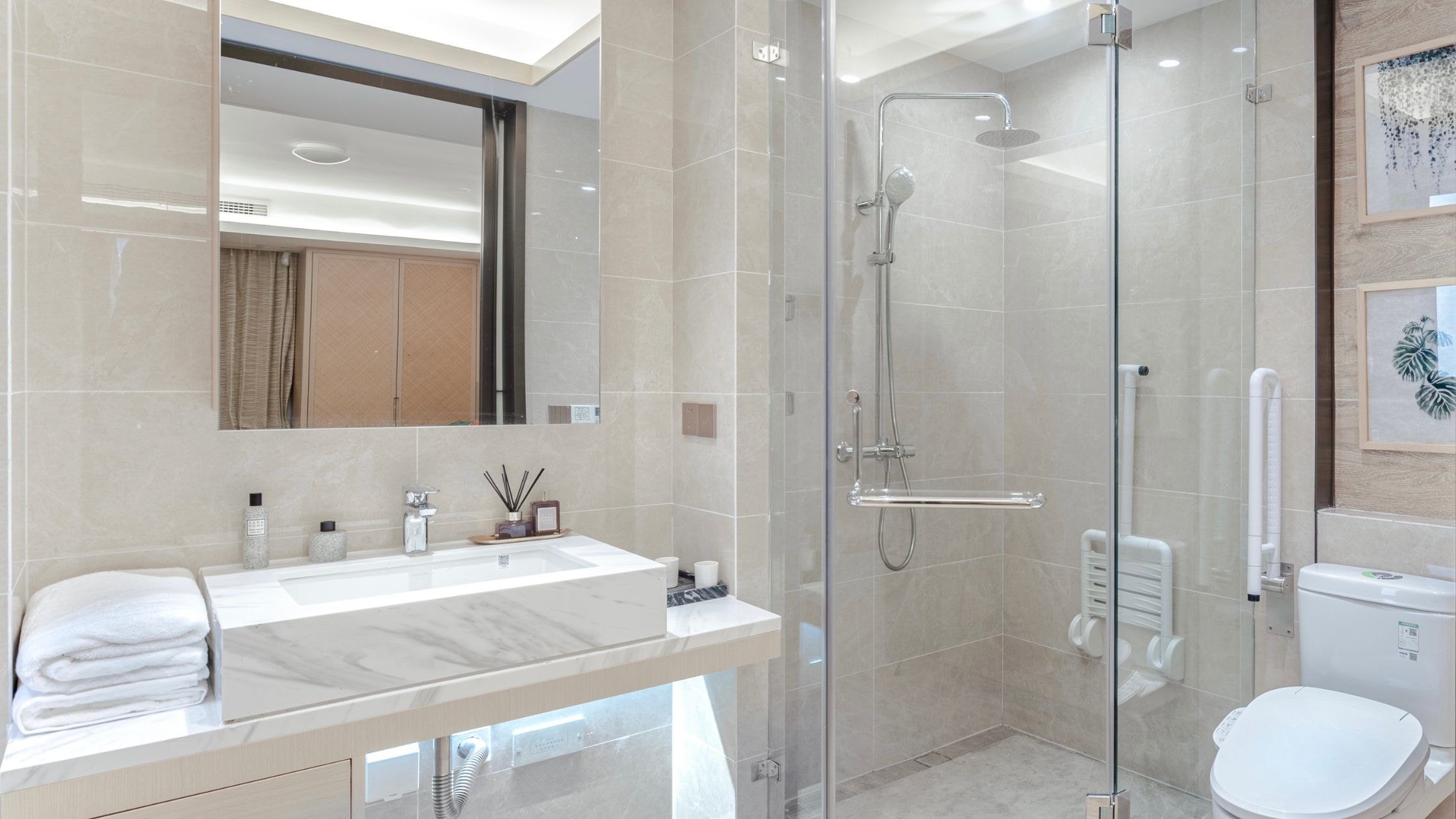
No matter which tile alternative you choose, incorporating key safety tips into your design will help you create a safer bathroom environment:
1. Add Non-Slip Mats
Place non-slip mats with suction cups near the shower, sink, and toilet to address slippery floors and wet surfaces. These mats provide extra grip, reducing the likelihood of slips and falls.
2. Install Grab Bars
Position grab bars strategically around the shower, bathtub, and raised toilet seat. They help users maintain balance and prevent fall risk in high-use areas. Consider vertical grab bars near doorways or alongside walk-in tubs for added safety.
3. Monitor Your Water Temperature
Set your hot water heater to a safe level to avoid accidental burns. Water temperature between 100°F to 120°F is recommended to strike the right balance between comfort and safety.
4. Improve Lighting
Use good lighting to prevent slips due to poor visibility. Add night lights for nighttime visits to the bathroom and improve visibility during low-light conditions.
5. Address Tripping Hazards
Eliminate tripping hazards by securing loose towel racks, cleaning products, and other objects scattered around high-traffic areas. Keep shelves and storage units organized to make the most of limited mobility spaces.
Prevent Falls with Enhanced Safety Features
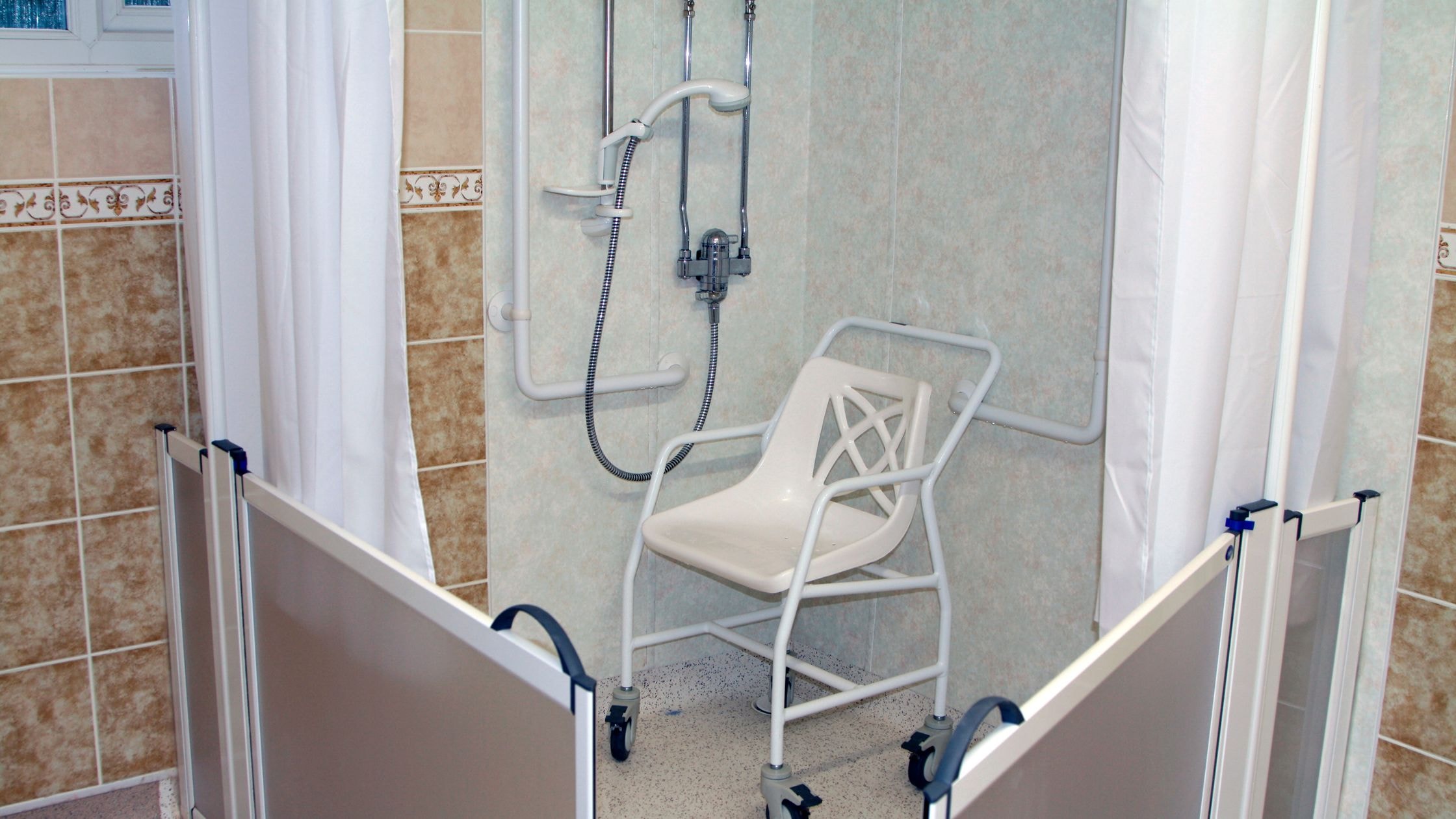
Adding extra features to cater to specific needs can greatly improve senior bathroom safety:
- Elevated toilet seat or a raised toilet seat for users with difficulty standing or sitting.
- A shower chair to assist those unable to stand for long periods while showering.
- Slip-resistant flooring in cramped spaces to minimize falls in the bathroom.
Did you know? According to the Centers for Disease Control, falls are a leading cause of serious injuries among older adults. Simple changes like these can make a huge difference.
FAQs About Bathroom Safety and Tile Alternatives
Are there affordable ways to prevent accidents in my loved one’s bathroom?
Absolutely! Options like installing non-slip mats and grab bars are affordable, quick solutions to prevent slips and ensure bathroom safety.
How does vinyl compare to traditional tiles for bathrooms?
Vinyl surpasses tiles for accessibility and safety due to its anti-slip properties, non-slip backing, and water resistance.
What’s the best way to start a bathroom remodel?
Start by identifying potential hazards. Reference our guide on How to Plan Your Accessible Bathroom Remodel for helpful insights.
Can acrylic surfaces replace tiles altogether?
Yes! Acrylic is a seamless, low-maintenance option that eliminates the risks of grout-based tripping hazards.
How do I ensure a safe, stylish remodel for older adults?
Check out our article on Overcoming Common Fears in Accessible Bathroom Remodeling for practical advice tailored to older adults’ needs.
Create a Bathroom That Balances Safety and Style
Designing an accessible bathroom doesn’t stop at choosing the right tile alternatives. By incorporating features like grab bars, non-slip mats, and improved lighting, you minimize the risks and create a functional space for everyone.
If you’re ready to explore more bathroom remodeling ideas or need guidance, read The Ultimate Guide to an Accessible Bathroom Remodel. Prioritize these safety measures to build a bathroom that’s equally stylish and secure.

